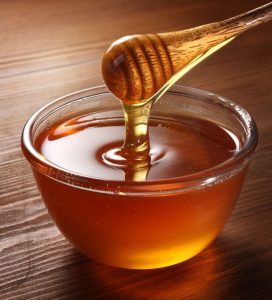Honey: A Powerful Anti-Cancer Agent

Posted on: Sunday, May 4th 2014 at 11:00 pm
Written By: Sayer Ji, Founder
This article is copyrighted by GreenMedInfo LLC, 2014
Visit our Re-post guidelines
Honey: A Powerful Anti-Cancer Agent
Most of us know honey as a sweet treat, but few are aware of its powerful cancer killing properties.
Honey is a superlative healing food. We know it has over 69 health benefits, as confirmed by the biomedical literature itself. But did you know it could be of profound benefit in diseases as life threatening and seemingly incurable as cancer?
Indeed, a recent study published the journal Molecules looked at the role of honey in positively impacting the development and progression of tumors or cancers. The review identified the presence of flavonoids and phenolic acids in honey as the primary anti-cancer compounds involved in its beneficial properties.
According to the study, flavonoids are biologically active natural compounds with a 15-carbon (C6-C3-C6) structure, comprising two benzene rings joined by a heterocyclic pyrane ring, with honey containing the following:
Chrysin
Kaempeferol
Quercetin
Pinobanksin
Pinocembrin
Luteolin
·Apigenin
Hesperetin
Naringenin
Genistein
Interestingly, many of these flavonoids are classified as phytoestrogens, which are phytochemicals structurally similar to mammalian estrogens and therefore can bind to estrogen receptors. While many of these honey-derived flavonoids have been demonstrated to have both inhibitory and stimulatory effects, the vast majority of the cell (in vitro) and animal (in vivo) studies have demonstrated the anti-breast and estrogen sensitive cancer properties of these compounds, indicating that flavonoid rich honeys are likely to positively influence estrogenic activity in estrogen-receptor positive cancers.
Furthermore, some honeys – such as Tualang honey – exhibit the property of selective cytotoxicity, meaning they target cancer cells by inducing programmed cell death while leaving non-cancerous cells unharmed. This is extremely different than the mechanism of action behind conventional chemotherapy agents and radiotherapy which indiscriminately target both healthy and cancerous tissue, often conferring increased survival advantage to the most tumorigenic cells themselves: cancer stem cells.
Unlike chemotherapy and radiotherapy, natural compounds commonly exhibit this ‘do no harm’ property when it comes to healthy tissue, while at the same time being exceptionally effective at targeting the harmful cells.
Honey Better than Chemotherapy?
Another recent study compared the effect of Tualang honey with that of the pharmaceutical tamoxifen (an estrogen receptor antagonist) in two breast cancer cell lines (MCF-7 and MDA-MB-231). The study found that the anti-cancer effect of tualang honey on breast cancer cells was comparable to that of tamoxifen, a multi-billion dollar blockbuster drug. This is all the more remarkable, considering that Tamoxifen is classified by the World Health Organization and the American Cancer Society to be a human carcinogen, and is technically a xenobiotic chemical – inherently toxic and biologically alien to human physiology.
Honey Kills Cancer in Animals
According to the study, animal research has established honey’s significant anti-cancer properties, specifically in regard to inhibiting metastasis (invasiveness):
“Several studies have also confirmed the antimetastic, antiproliferative and anticancer effects of honey on breast tumor or cancer in rodents. In a murine (mammary carcinoma) tumor model, the anti-metastatic effect of honey when applied before tumor-cell inoculation has been reported [40]. The antimetastatic effect of honey may be due to its flavonoids such chrysin which have been shown to inhibit the metastatic potential of human breast cancer cells [41]. Similarly, a study investigated the antitumor effect of two honey samples containing different phenolic contents against Ehrlich ascites and solid carcinoma. Both honeys were found to markedly inhibit the growth of Ehrlich ascites carcinoma, but the honey containing higher phenolic content exerted a greater antitumor effect [42]. Research carried out by Tomasin and Gomes-Marcondes investigated the effects of combined Aloe vera and honey on tumor growth and cell proliferation against Walker 256 carcinoma implant in Wistar rats. Both agents were found to suppress tumor growth and inhibit cell proliferation.
The review focused on the potential of honey to affect a variety of cancers, including:
Liver Cancer: Gelam honey has been found to kill liver cancer cells, exhibiting selective cytotoxicity, anti-angiogenic, cytotoxic, and anti-proliferative properties, in both cell and animal research.
Colorectal Cancer: gelam and nenas monofloral honeys exhibit anti-cancer properites in colorectal cell lines.
Prostate Cancer: Greek honeys (thyme, pine and fir honey) have been found to exhibit anti-proliferative properties.
Other Forms of Cancer: There has been a battery of studies on the anti-cancer properties of honey, focusing on the following types: a) bladder b) endometrial c) renal cell carcinoma d) skin cancer cells e) cervical f) non-small cell lung cancer g) mouth cancer h) bone cancer (osteosarcoma).